Shenzhen promotes low-altitude economy
Writer: Liu Minxia | Editor: Liu Minxia | From: | Updated: 2023-10-27
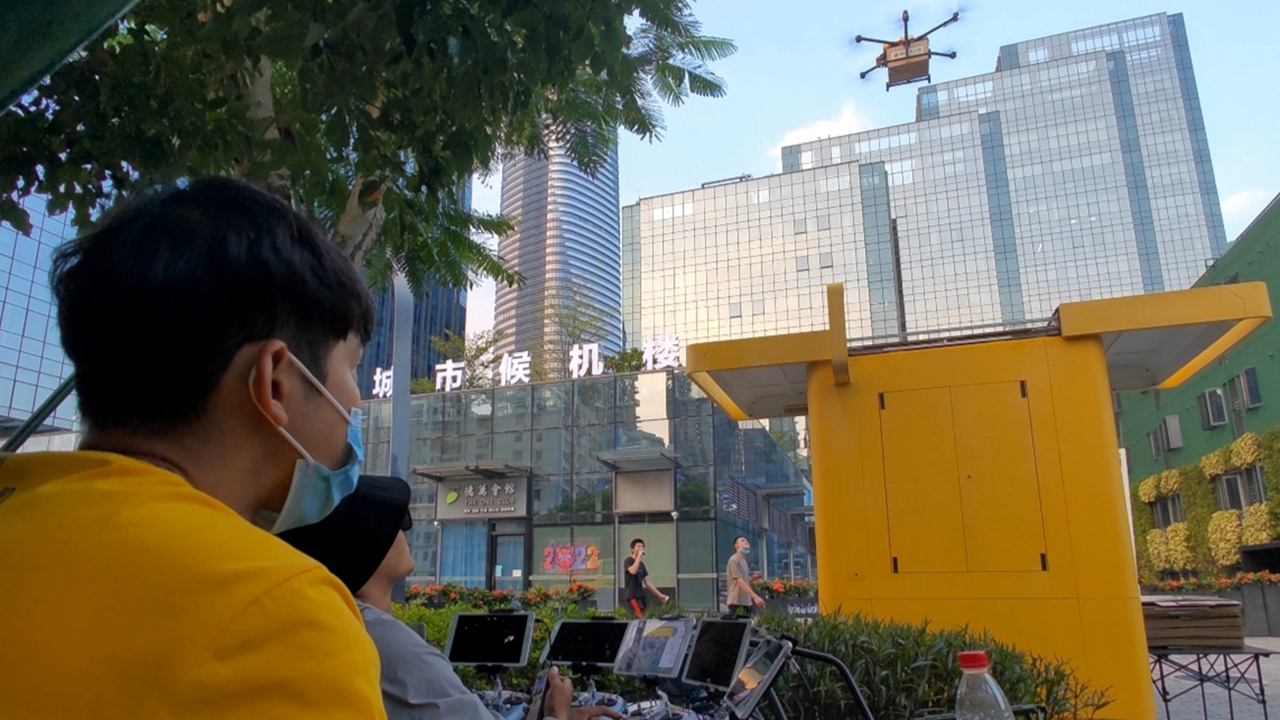
A drone is seen dropping off a parcel at Galaxy World in Bantian, Longgang District, in this September 2022 photo. File photos
Already at the forefront of the flourishing low-altitude economy, Shenzhen is mulling further enhancements for the sector by providing policy support and clearing regulatory hurdles.
With a complete drone manufacturing supply chain, Shenzhen is home to roughly 1,300 unmanned aerial vehicle (UAV)-related companies that form a significant industry worth US$10 billion, accounting for 70% of China’s total.
Great prospect
The city has become a magnet for businesses specializing in drone-assisted deliveries, transportation, tourism, and imaging. Companies such as DJI specialize in drone research and development; enterprises such as EHang Intelligence are pioneering services involving passenger drones; and Meituan and Fengyi Technology prioritize drone-enabled instant deliveries.
Data shows that in the first three months of this year, Shenzhen saw more than 1,800 commercial operations of drones, which transported more than 130,000 pieces of goods. By the end of last year, Shenzhen had opened 83 UAV routes, and recorded 300,000 UAV flights for cargo transportation or other purposes.
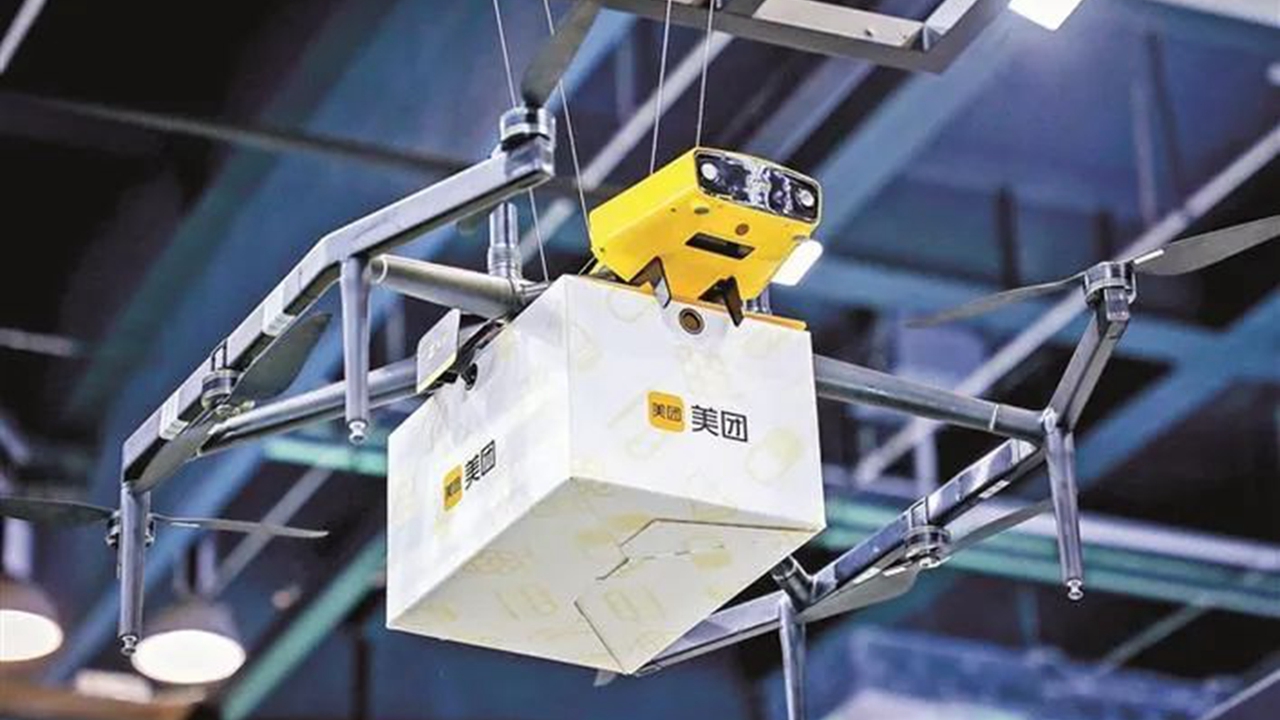
A Meituan delivery drone.
Tan Chaochen, secretary general of the Shenzhen Aviation Industry Association, said that the prospect of Shenzhen’s low-altitude economy is promising. “As its huge commercial value and social value become better known, the low-altitude economy will bring huge opportunities for the development of its upstream and downstream industries,” he said.
Yang Jincai, chairman of the World UAV Federation and president of the Shenzhen UAV Industry Association, said that Shenzhen, a pioneer in low-altitude economy, has formed a complete industrial chain covering UAV research and development, production, manufacturing, sales and applications. In addition to a number of well-known UAV enterprises, companies of other sectors have dabbled in the low-altitude businesses, which led to mushrooming innovations in the field, Yang said.
Policy support
In support of this relatively new sector, Shenzhen last year issued a four-year action plan for a low-altitude economy, while in February this year, the city government work report highlighted a plan to build a low-altitude economic center, a general aviation industry comprehensive demonstration area, and a civil unmanned aviation test area. In May, the city established the Shenzhen Low-Altitude Economy Expert Committee, while in August, the city’s transport bureau issued a series of supportive measures aimed at developing low-altitude airspace.
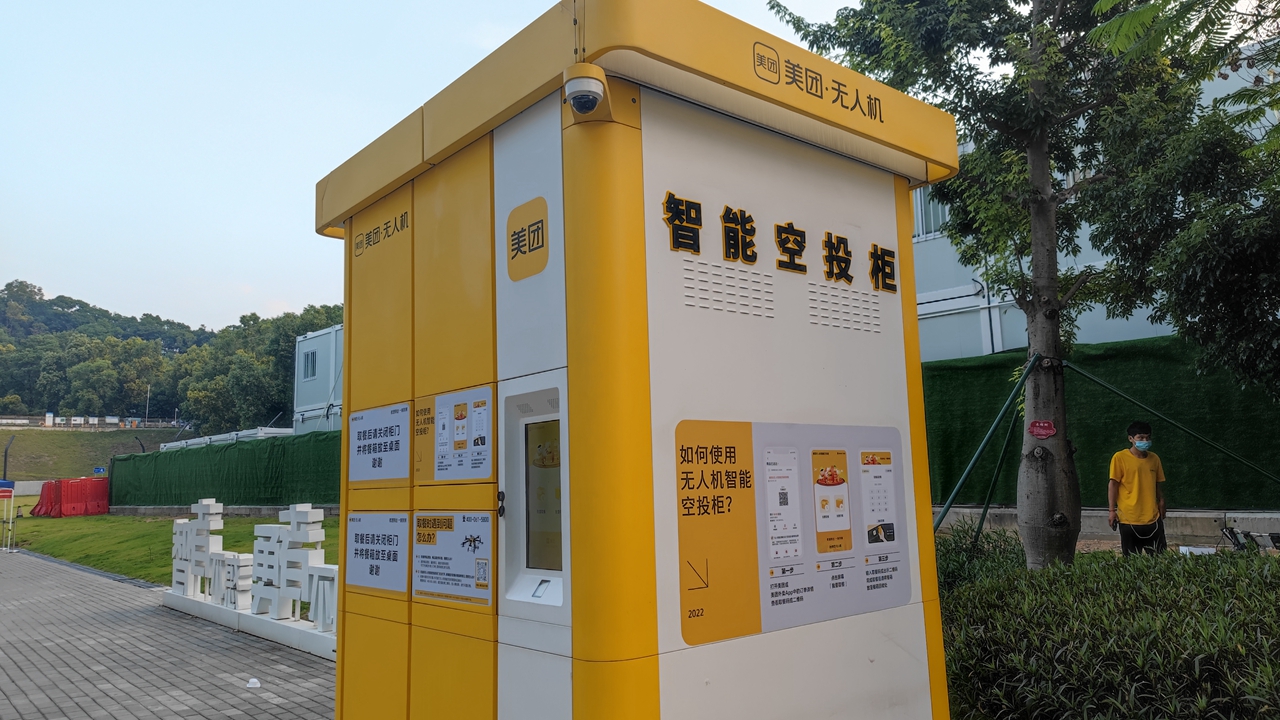
The intelligent drop-off locker for drone delivery service in Bantian.
District-level governments are also rolling out measures aimed at bolstering the burgeoning low-altitude economy.
Futian District recently released a three-year action plan, aiming to develop itself into a model district in the low-altitude field through measures such as attracting UAV enterprises to set up headquarters there, while Nanshan District, which aims to build itself into headquarters and research and development bases for China’s low-altitude firms, will provide support to companies involved in whole machines, core components, key materials and operational services of the urban air mobility sector.

An amphibian UFO-like flying disk developed by Shenzhen UFO Flying Saucer Technology Co. takes a test flight at Shenzhen Talent Park in Nanshan District on June 3. Courtesy of the company
Dubbed “the world’s UAV hub,” Nanshan has a complete industrial chain and leads in UAV output. In 2022, the district’s UAV industry output exceeded 55 billion yuan (US$7.5 billion), accounting for more than 50% of the country’s total.
The district will offer substantial project incentives, such as cash resettlement assistance, to support their development and growth, with a maximum subsidy of 60 million yuan for a single project.
On Sept. 4, Nanshan District launched its third regular drone delivery route, marking a new step forward in the city’s low-altitude logistics. This route, like the previous ones in the Window of the World and Splendid China scenic areas, ensures good to be delivered to places within a radius of 3 kilometers in about 15 minutes.
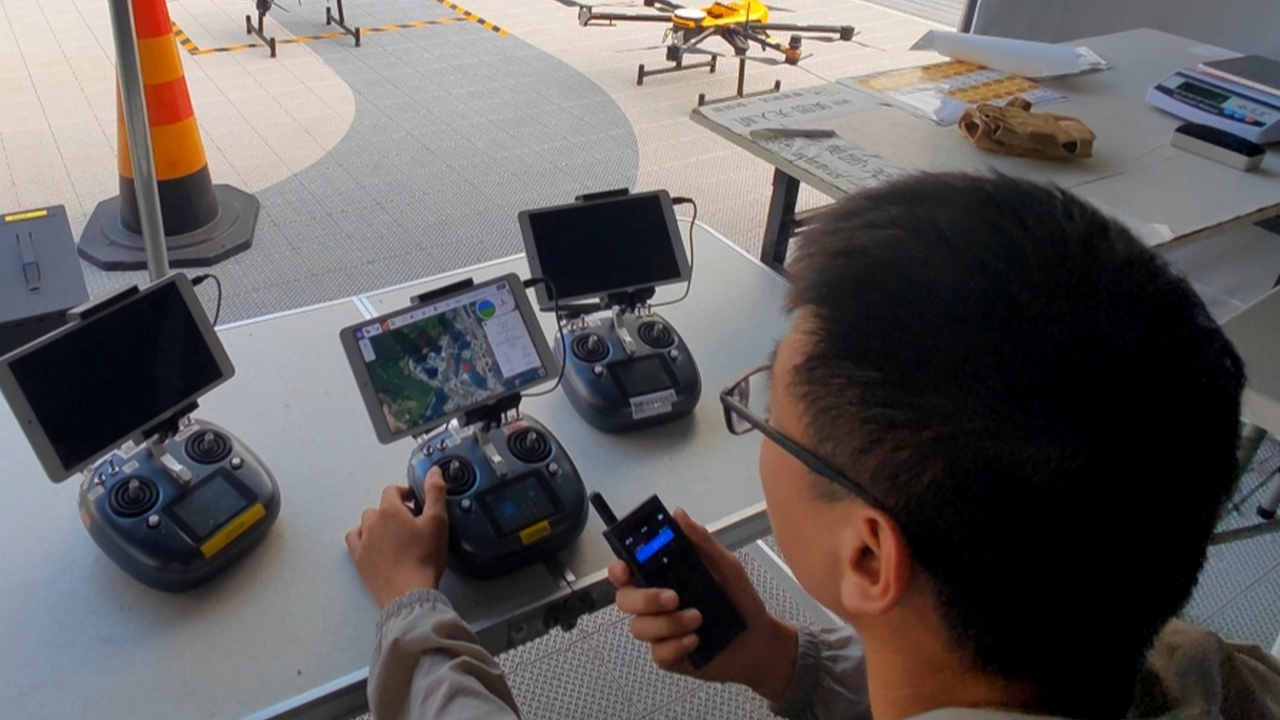
A Meituan staffer monitors a drone delivery.
Longhua District, where Meituan launched its intelligent drone manufacturing center in September, held an event in Beijing to draw spotlight on its high-quality development of low-altitude economy and launch 13 supportive measures, promising to spend 200 million yuan within the next three years on the innovation and development of its low-altitude sector.
Bao’an, which has been a base of UAV manufacturing, held two promotional events in July and signed memorandums of understanding (MOU) with two leading UAV companies, Ehang and AutoFlight. In one MOU, Bao’an said it will assist AutoFlight, a Chinese UAV firm, in landing its large-scale electric vertical takeoff and landing (eVTOL) aircraft project in Shenzhen and the rest of the Guangdong-Hong Kong-Macao Greater Bay Area. AutoFlight said it will hold a demonstration flight for the Shenzhen-Zhuhai route, a landmark in intercity air route, in the year’s last quarter. Additionally, the Bao’an government also signed an MOU with German air taxi startup Lilium N.V., a developer of the world’s first eVTOL jet, and the German comapny will set up its Asian regional headquarters in Bao’an.
Bao’an has already developed an industrial value chain spanning drones, aircraft manufacturing, avionics and satellite navigation, along with materials and software development, and 21 out of every 100 UAVs produced globally are made in Bao’an, statistics show.
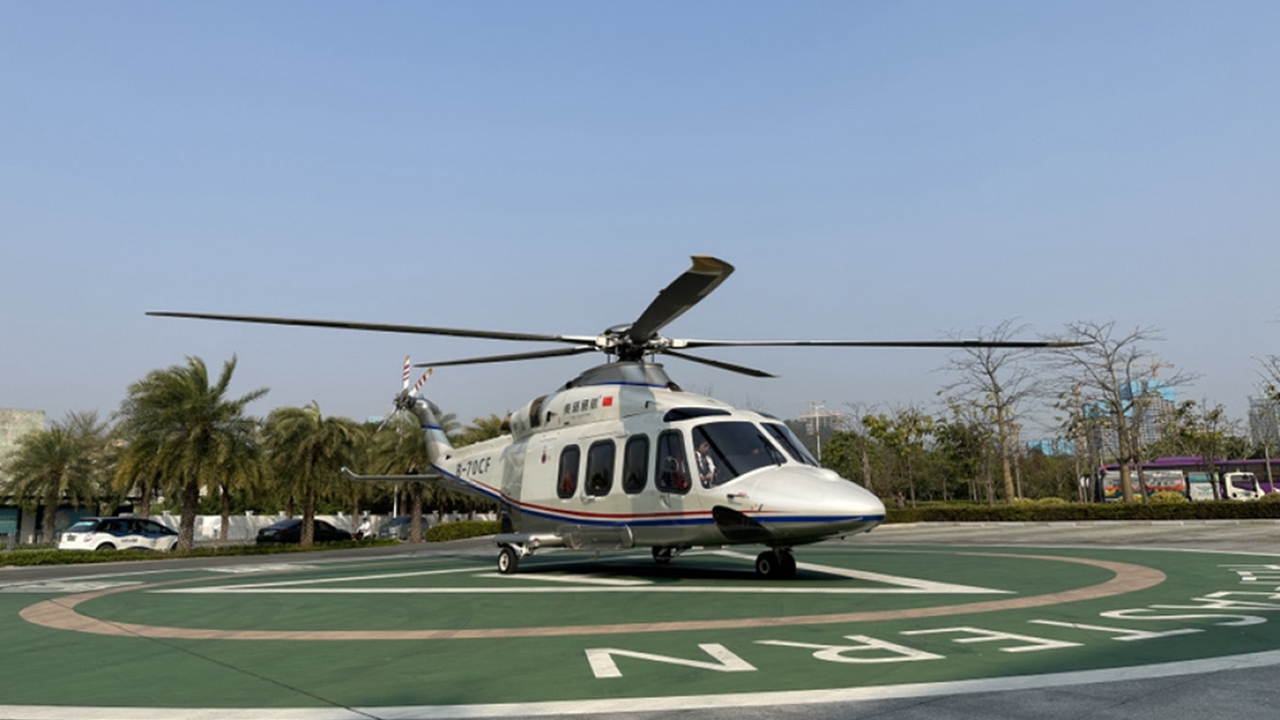
A helicopter takes off from the Yanzi Lake International Convention and Exhibition Center in Pingshan District in its maiden flight to Futian CBD in March.
Pingshan District opened an eVTOL commuter service in March that trimmed a single trip to the Shenzhen Bao’an International Airport to 20 minutes and to Futian CBD to 13 minutes
Yuan Huyong, vice head of Pingshan, said the service is not only a new growth engine for the district’s economic development, but also will give a boost to Shenzhen’s low-altitude economy. The district also plans to build a helipad at the district’s No. 3 people’s hospital, which is expected to be operational next year, and another helipad in the new site of Pingshan People’s Hospital, which is expected to be put into use in 2025.